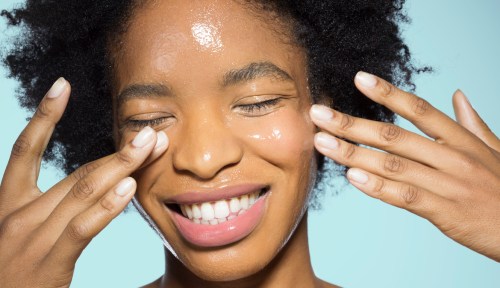The One Common Skin-Care Mistake Dermatologists Say Is Making Your Retinol So Much More Irritating
Dermatologists are begging you not to combine retinol and slugging for the sake of avoiding irritation in your skin.

Sunscreen aside, retinol has long been the dermatologist darling of the skin-care world, widely considered the gold standard when it comes to treating signs of aging. The vitamin A derivative helps increase skin cell turnover and refine texture, as well as minimize fine lines and wrinkles, boost collagen production, and clear clogged pores. But this skin-care panacea isn’t without its risks; after all, with great power comes great responsibility. And with great retinol comes the possibility of purging, redness, dryness, irritation, and flaking.
According to board-certified dermatologist Joshua Zeichner, MD, those risks are highest during the first two to four weeks of use, as the skin adjusts to the powerful ingredient. But even after the skin acclimates, there’s still the potential for irritation and other side effects—even after two to six months, when users typically start seeing visible results, the risks continue to loom large.
While a rocky first month of use is par for the course, any side effects or irritation after that period tend to come as the result of changes in skin health or skin-care routine—perhaps you’re using too much retinol or over-scrubbing your face, or maybe your skin barrier’s been compromised by ultra-cold weather. In other words, once your skin has had the time to acclimate to retinol, any lingering side effects are likely the result of outside sources.
And, according to both Dr. Zeichner and board-certified dermatologist Ranella Hirsch, MD, there’s one sneaky mistake they’re seeing more and more when it comes to retinol irritation. Enter slugging.
What is slugging?
For the uninitiated, slugging refers to a skin-care technique in which moisture and hydration are locked into the skin via a heavy occlusive (like petroleum jelly) that’s applied as the last step in a nighttime skin-care routine. This boosts water retention, restores the skin barrier, and leaves skin looking plump and supple. The phenomenon went viral on #beautytok a few years ago, and has since spawned an entirely new skin-care category.
This Parisian Skincare Brand Is Launching in the United States for the First Time—Here’s What a Derm Wants You to Know

We’re Calling It: Cleansing Balms Are the Face Wash of the Future—Here Are 3 to Add to Your Cart

This Is the One Product That Scarlett Johansson Always Keeps in Her Purse and on Her Bedside Table

While it only recently reached virality online, slugging is nothing new: In fact, it’s been in practice since the 15th century, and has been a mainstay in K-Beauty for decades. Dermatologists have long considered it an effective method to repair the skin barrier and provide deep hydration, especially for dry skin.
Given retinol’s tendency to leave skin dry and flakey, many have turned to slugging to combat that irritation and boost barrier function. While, in theory, this logic seems sound, it ignores some major red flags—and can ultimately make things worse for your skin instead of better.
How does slugging affect retinol?
It’s important to remember that slugging doesn’t lock only moisture and hydration into the skin; it also enhances penetration and boosts the potency of any products layered underneath that thick occlusive layer, Dr. Hirsch explains. And that’s not always a good thing, especially when it comes to the already-omnipotent retinol.
In fact, slugging over retinol often yields the exact opposite of the intended effects. Instead of strengthening the barrier and giving skin a boost of hydration, retinol’s effects—and side effects—become even stronger when sealed with a heavy occlusive, nearly guaranteeing irritation and dryness.
“Sealing retinol in with an occlusive is irritating to many—even those who can tolerate a retinol when used properly,” Dr. Hirsch says. “I almost never have patients do this. It’s super imprecise, not without risk, and offers limited benefits, if any.”
And Dr. Zeichner agrees: “In the case of retinol, layering petroleum jelly on top of it boosts potency, but it also boosts potential irritation at the same time. It’s generally not something I recommend doing. Instead, I recommend combining retinol with a moisturizer to maintain skin hydration and minimize potential irritation.” That’s not to say you can’t slug on nights when you aren’t using retinol—in fact, it can be a great way to combat some of retinol’s more finicky effects. But for the sake of your skin, keep retinol and those heavy occlusives separate.
Sign Up for Our Daily Newsletter
Get all the latest in wellness, trends, food, fitness, beauty, and more delivered right to your inbox.
Got it, you've been added to our email list.







